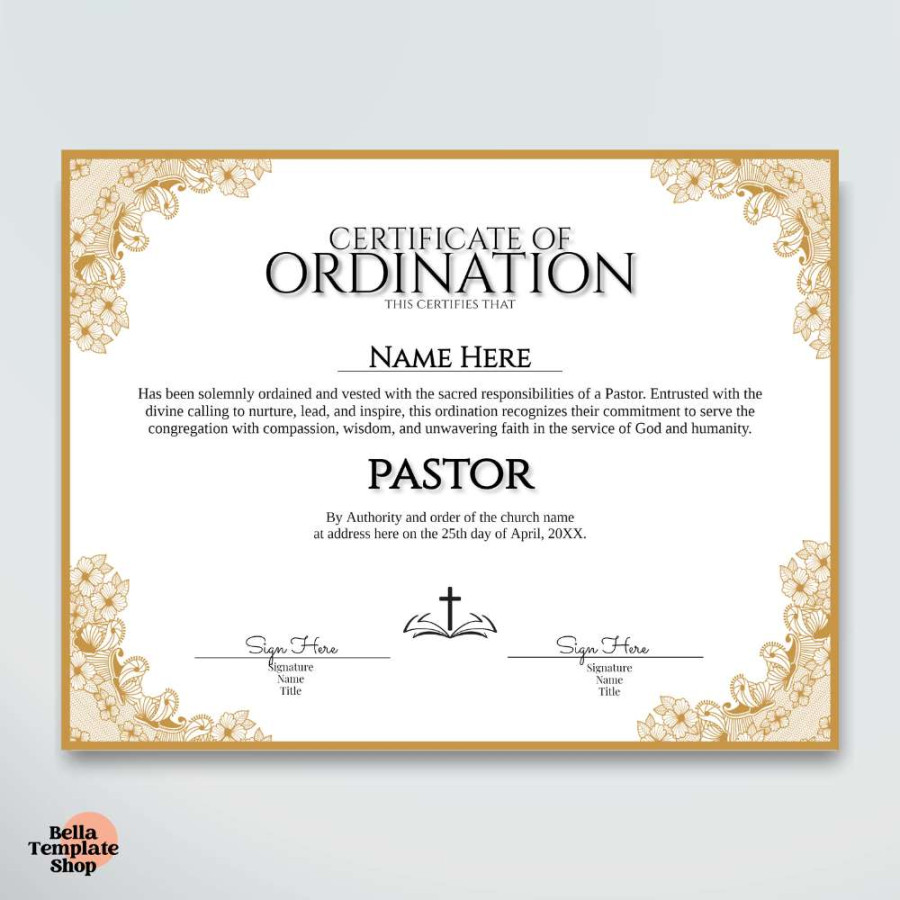An Ordination Certificate Template serves as a formal document that verifies an individual’s ordination as a religious leader. It is a crucial piece of documentation for ministers, priests, and other ordained clergy. A well-designed template not only conveys the significance of the ordination but also reinforces the credibility and professionalism of the religious organization issuing it.
Design Elements for Professionalism

1. Font Selection: Choose fonts that are both legible and elegant. Serif fonts, such as Times New Roman or Garamond, often exude a classic and formal appearance. Sans-serif fonts like Arial or Helvetica can also be used for a more modern and contemporary feel. Ensure the font size is consistent throughout the template, making it easy to read.
2. Layout and Spacing: Maintain a clean and uncluttered layout with ample white space to improve readability. Use consistent margins and spacing between elements. Consider a centered alignment for the main text, while headings and subheadings can be left-aligned for a more structured appearance.
3. Paper Quality: Opt for high-quality paper that complements the formal nature of the certificate. Consider using a thicker paper stock with a subtle texture or watermark for a more premium feel.
4. Color Scheme: Choose a color scheme that reflects the values and traditions of the religious organization. While white backgrounds are common, you can incorporate subtle color accents to add visual interest. Avoid overly bright or garish colors that may detract from the professional appearance.
5. Logo and Branding: prominently display the logo of the religious organization. Ensure the logo is well-designed and consistent with the overall branding. You may also include the organization’s name, address, and contact information in a footer or header.
6. Seal or Stamp: A seal or stamp can add a touch of authenticity and formality to the certificate. Consider using a custom seal with the organization’s name or a religious symbol.
7. Border: A subtle border can help frame the certificate and create a more polished appearance. Avoid overly ornate borders that may distract from the content.
8. Text Content: Use clear and concise language that accurately conveys the information. Include the following essential details:
Name of the ordained individual
9. Signatures and Witnesses: Ensure that the certificate is signed by the appropriate authority, such as the presiding bishop or pastor. Consider having additional witnesses sign the document to further validate its authenticity.
10. Security Features: To prevent fraud and counterfeiting, consider incorporating security features such as:
Watermarks: Subtle patterns or designs embedded in the paper.
By carefully considering these design elements, you can create an Ordination Certificate Template that is both visually appealing and professionally credible. A well-crafted template will serve as a valuable document for the ordained individual and a testament to the legitimacy of the religious organization issuing it.